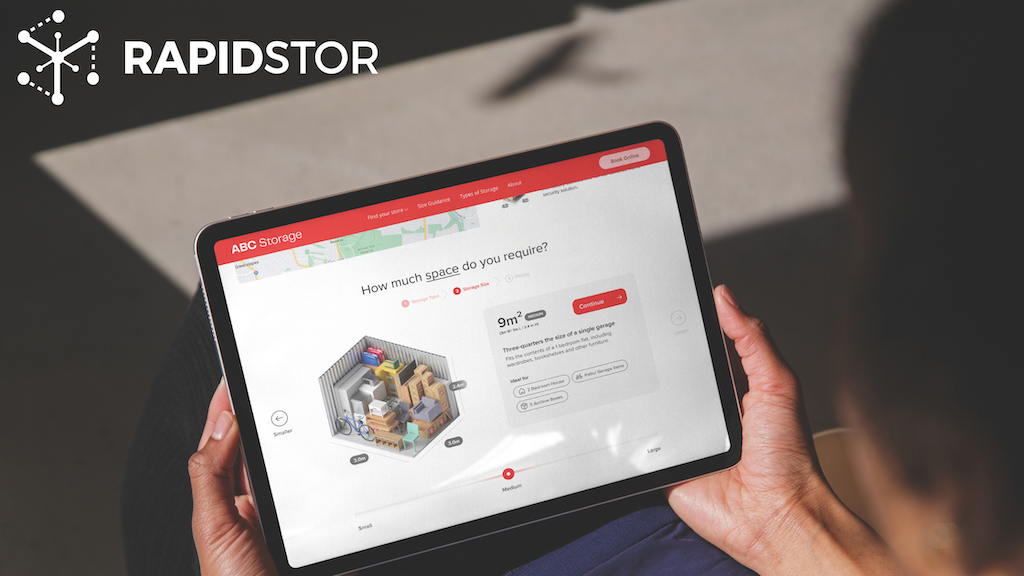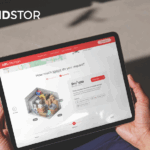The Self-Storage industry has undergone a huge digital shift in recent years. From reservations to automated gate access, tenants can now expect to be able to research, compare, and book a storage unit online without needing to speak with a person. The real challenge often isn’t getting customers to your website; it’s keeping them confident enough to complete the booking.
This “last click” moment is where booking friction can become a problem. Tenants are often ready to commit, but sometimes have a lack of clarity or confidence about their choice, which causes them to hesitate. And hesitation, in a digital-first world, can quickly lead to abandoned carts, lost revenue, and, in the context of Self-Storage, a tenant booking with a competitor instead.
The challenge of online booking in storage
Unlike booking a hotel or ordering a product online, renting a storage unit isn’t something most customers do regularly. It is often tied to life events like moving house, downsizing, or running out of space. Tenants already feel pressure to make the right decision, and when the booking process doesn’t provide enough detail, that pressure increases.
Common concerns include:
- Where is the unit located in the facility?
- How easy will it be to access?
- Am I choosing the “best” option for my needs?
If the customer doesn’t feel confident they’ve picked the right unit, they’re far more likely to pause and, in many cases, never return.
Lessons from other industries
To understand why choice and clarity matter so much, it helps to look at other industries that have solved this exact problem.
Online shopping: Shoppers expect full product transparency from multiple photos and dimensions to reviews from past buyers. That detail reduces uncertainty and builds trust.
Real estate: Listings almost always include floor plans and maps because buyers and renters want to picture themselves in the space. Seeing the layout creates confidence in the decision.
Airline seat maps: Few travellers would accept being assigned a random seat. People want control, whether it’s for comfort, convenience, or peace of mind.
Across all these examples, one theme stands out: when people are given choice and visual clarity, they’re more likely to commit. The same principle applies directly to Self-Storage bookings.
Bringing visual choice to Self-Storage
Until now, many storage booking systems have kept unit selection hidden behind generic categories, such as “small,” “medium,” or “large.” While this simplifies the process, it leaves customers guessing about the actual location of their unit, and that lack of certainty creates friction.
Tools like RapidStor’s new Booking Map feature are designed with this in mind, giving tenants a visual, intuitive way to choose a unit while allowing operators to maintain control over what’s displayed. It’s important to note that these maps have been designed to maintain security for operators.
Booking maps also unlock new opportunities. Units in premium positions closer to access points, lifts, or loading bays can be priced accordingly. Multi-level or complex sites can present their layout more clearly, making it easier for tenants to understand what they’re booking.
Why the “last click” matters most
In an industry where attracting each new customer can be costly, improving conversion at the final stage of the booking journey is one of the most effective ways to boost revenue. Reducing hesitation at the “last click” not only increases completed bookings but also builds stronger trust with tenants who feel more in control of their choices.
For operators, that means fewer abandoned reservations, better use of facility layouts, and a stronger reputation for being easy to do business with. For tenants, it means a smoother, more transparent experience at a stressful time.
The Self-Storage industry is catching up to the digital expectations set by online shopping, real estate, and travel. Tenants don’t just want space; they want clarity, choice, and confidence in their decision. By reducing booking friction and focusing on that critical last click, operators can turn digital convenience into a powerful sales advantage.







